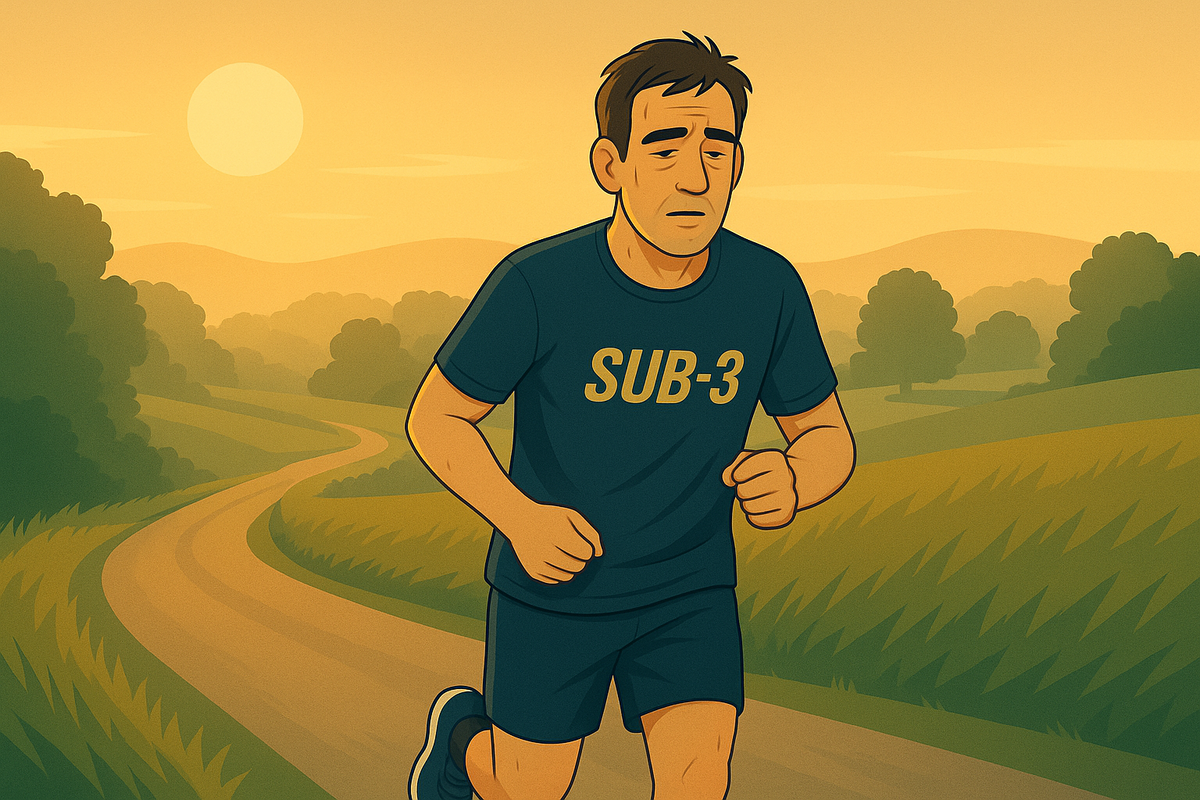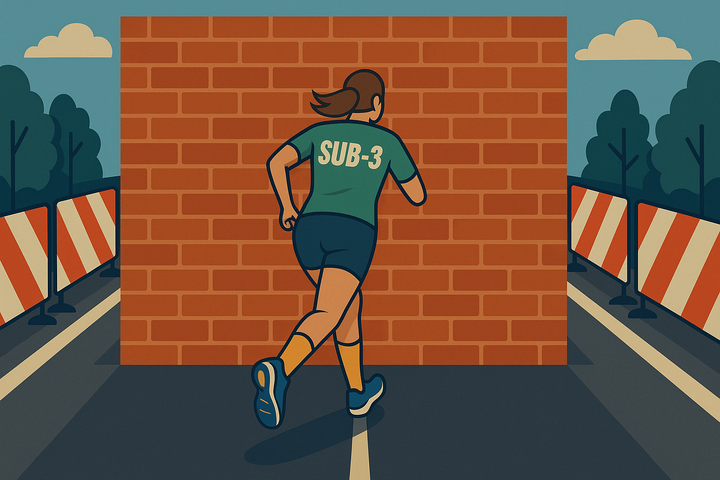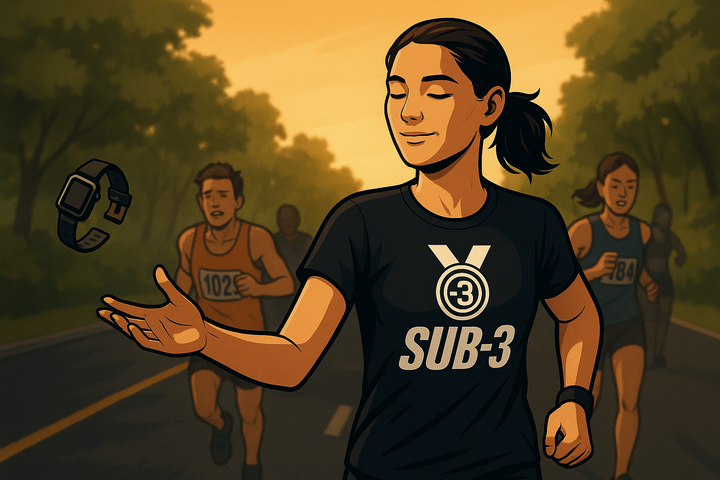How do I know if I’m overtraining for a sub-3?
What if the biggest threat to your sub-3 goal isn’t laziness or lack of talent – but training too hard for too long, and ignoring the warning signs?

It takes a lot to go sub-3, and it tends to suit a slightly obsessive type, someone who welcomes hundred-mile weeks as a challenge and pores over training plans and optimising performance way beyond just the run itself.
While sub-3 and PBs beyond that are hard-fought, and are not won by talent alone, the bloody-minded determination to stick to the plan – one of the key drivers that gets you through to race day and the race itself – can also blind runners to the signals of something very real: overtraining.
It happens to the very best of us. Ron Hill is one of the greatest marathoners of all time – and provided us with a great service in diligently logging his training in detail (later published in a two-volume autobiography, The Long, Hard Road). Like Emil Zatopek before him, Hill experimented relentlessly to find innovative ways to improve his performance. But this could sometimes backfire, as he recounts:
“I wondered what would happen if I went beyond my 120 to 130 miles per week. Would I reach another plane of fitness and capability? I had to find out: therefore, week by week I slipped in a third session of 6.5 miles in my lunch break at work… But I was never really happy. A lot of time I felt slightly fatigued and towards the end of this increased training stint, I seemed to be doing nothing but changing in and out of running gear… I went on ‘the diet’ [carb depletion], got a sore throat and generally didn’t feel like a race at all.”
When Ron Hill, the former world record holder for the longest running streak (19,032 days), and a voracious racer, complains of not feeling like racing, something’s up.
Tim Noakes in The Lore of Running correctly identifies this – illness is often a clear sign of overtraining and an urgent signal that more rest, not more training, is needed.
The signs of overtraining are now quite well agreed, and they include:
- Drop in performance not explained by lack of training or recovery
- Lack of spring in your step on easy or moderate days
- Persistent fatigue throughout the day, not just when running
- Loss of appetite or abnormal cravings
- Poor sleep patterns, insomnia or unrefreshing sleep
- Loss of normal enthusiasm for running
- Recurring injuries or muscle aches that don’t fade
- Mood changes including irritability, anxiety or feeling unable to relax
- Difficulty concentrating or sustaining focus at work
- Loss of coordination, clumsiness or unusually poor running form
- Reduced libido
- Lowered immune function leading to more frequent colds, coughs or infections
- Elevated resting heart rate or greater variability in HR during runs
- Unusual muscle soreness that lingers beyond normal recovery windows
This list can be intimidating, and in isolation none of these symptoms necessarily means overtraining. But if you can tick off a few of these boxes, and your intuition tells you something feels off, don’t ignore it. Trust your instincts and listen to your body.
I often find the danger point comes early in a block, when you ramp up intensity or mileage too quickly from a lighter period. Masters runners can also be more prone, especially when adding high-intensity sessions like track or hill work alongside younger athletes who recover faster.
So what should you do? The first step is often the hardest: pause. A day or two of rest will not harm your fitness. In fact, it may be the best thing you can do to absorb training gains. If you’re coming down with a bug, allow yourself a little longer to fully recover, then ease back in with easy running before resuming normal training.
Beyond taking time off, consider other measures to help mitigate overtraining:
- Reduce intensity and volume temporarily rather than stopping entirely
- Incorporate more sleep and daytime rest, even short naps
- Improve nutrition – make sure you’re getting sufficient calories, protein and micronutrients
- Hydrate properly – dehydration can exacerbate fatigue
- Do gentle mobility work, yoga or cross-training if you’re craving activity
- Monitor resting heart rate, mood and sleep patterns as early warning signs
- Talk it through with your coach or trusted training partner, or seek medical advice if the symptoms are worrying you – sometimes a second opinion is invaluable
All good training plans should include space for flexible pauses and adaptation. Sub-3 training can be brutal – that’s what makes the achievement so satisfying. But it takes resilience, maturity and patience to know when to step back and let your body recover. Sometimes the best thing you can do for your sub-3 goal is nothing at all. Smart recovery is not weakness – it is one of the hallmarks of a great sub-3 runner.
Enjoyed this article? Help keep Sub-3 running — support us with a coffee.
To help fund the running of the site, Sub-3 is an Amazon Associate and earns from qualifying purchases. We only recommend gear or kit that has genuinely helped in our own running and that we believe is worth considering.



